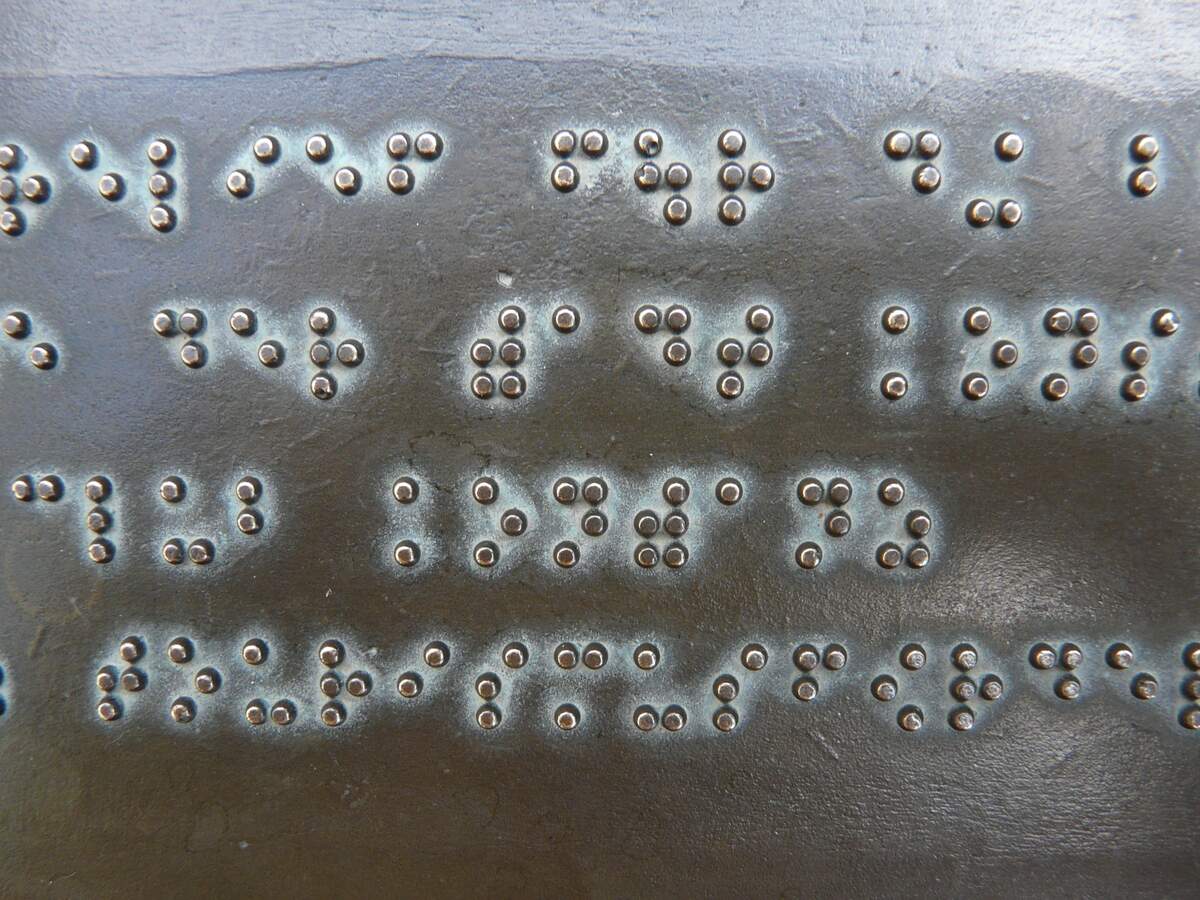

World Braille Day
Observed
annually on January 4th (since 2001)
Dates
Founded by
Canadian Institute for the Blind in 2001
United Nations General Assembly on December 17th, 2018
Hashtags
Sources
https://brailleworks.com/braille-resources/history-of-braille/
https://brailleworks.com/what-is-world-braille-day/
https://nfb.org/images/nfb/publications/bm/bm19/bm1903/bm190301.htm
https://undocs.org/Home/Mobile?FinalSymbol=A%2FRES%2F73%2F161&Language=E&DeviceType=Desktop&LangRequested=False
https://www.biography.com/scholar/louis-braille
https://www.britannica.com/biography/Louis-Braille
https://www.loc.gov/nls/services-and-resources/informational-publications/about-braille/
https://www.anrdoezrs.net/links/100298379/type/dlg/https://www.newspapers.com/image/322931973/
https://www.anrdoezrs.net/links/100298379/type/dlg/https://www.newspapers.com/image/508734328/
https://www.un.org/en/observances/braille-day
World Braille Day reminds us of the importance of accessibility and independence for people who are blind or visually impaired and spreads awareness about braille as a form of communication. On December 17, 2018, the United Nations General Assembly adopted Resolution A/RES/73/161.
It said that the General Assembly:
1. Decides to proclaim 4 January as World Braille Day, to be observed each year beginning in 2019, in order to raise awareness of the importance of Braille as a means of communication in the full realization of the human rights for blind and partially sighted people;
2. Invites all Member States, relevant organizations of the United Nations system, other international organizations and civil society, including non-governmental organizations and the private sector, to observe World Braille Day in an appropriate manner, in order to raise public awareness of Braille as a means of communication;
3. Encourages Member States to take measures throughout society to raise awareness of Braille as a means of communication;
4. Requests the Secretary-General to bring the present resolution to the attention of all Member States and organizations of the United Nations system;
5. Stresses that the cost of all activities that may arise from the implementation of the present resolution should be met from voluntary contributions.
While the UN observance began in 2019, World Braille Day has been observed on January 4 since at least 2001. That year, delegates of the World Blind Union's Fifth General Assembly proclaimed January 4 to be World Braille Day. The World Blind Union marked the observance during subsequent years, and they also endeavored to get the UN to designate January 4 as World Braille Day. Also in 2001, the Canadian National Institute for the Blind—now the CNIB Foundation—celebrated World Braille Day for the first time. January is also National Braille Literacy Month.
The United Nations defines braille as "a tactile representation of alphabetic and numerical symbols using six dots to represent each letter and number, and even musical, mathematical and scientific symbols." Used by blind and partially sighted people, it is a reading and writing system that is just as important as print is for sighted people. Users usually read with both hands and usually with their index fingers, moving from left to right across lines. The average reading speed is about 125 words per minute, but some can read up to 200 words per minute.
Braille just isn't in books but on other printed items essential for functioning in society, like financial statements, insurance policies, and restaurant menus. It is found on everyday objects like ATM machines, elevators, watches, board games, and playing cards. It's even found on Legos and Rubik's cubes. Some computers use braille for the blind or visually impaired, such as braille notetakers. Braille is important for education, access to information, social inclusion, and freedom of expression and opinion. Blind people who learn to use braille, as opposed to solely using spoken word technology, have better outcomes related to literacy, education, and employment.
Braille is named after its inventor, Louis Braille, and World Braille Day takes place on the anniversary of his birth. Born in Coupvray, France, on today's date in 1809, Braille injured one of his eyes at the age of 3 with an awl, a tool he found in the shop of his father, who was a harnessmaker. After both eyes became infected with sympathetic ophthalmia, he became completely blind at the age of 5. He was an astute student, using his listening skills, and at the age of 10 received a scholarship to attend the National Institute for Blind Youth in Paris.
While at the school, Braille met Charles Barbier, who had invented a code called sonography when he was in the French army, which used 12 raised dots that represented different sounds. When in the army, Barbier had seen soldiers get shot and die while reading by lamplight. He created sonography—which was also called "night writing"—so that soldiers could communicate silently at night without having to light their lamps to read. Barbier thought perhaps his system could better be used by the blind, and Braille thought it had potential too.
Braille, between the ages of 12 and 15, used Barbier's night writing system to create his own reading and writing system. He addressed the shortcomings of Barbier's system. It was based on sounds, not letters, which he changed, and it was complex, so he simplified it. Braille's system had only 6 dots, not 12. It consisted of 3 dots lined up in 2 columns, which could be used to make up to 64 different combinations that represented letters and punctuation marks. Unlike Barbier's 12-dot configurations, Braille's 6-dot configurations could all be felt and interpreted in one touch. A musician, Braille also adapted his raised-dot code to musical notation.
Braille became an apprentice teacher and then a teacher at the National Institute for Blind Youth. He published his treatise on braille in 1829, Method of Writing Words, Music, and Plain Songs by Means of Dots for Use by the Blind and Arranged for Them. Through the school, he published the first book in Braille, a three-volume children's history book, in 1837. Although, braille was controversial at the school, and it was banned by the school's new director in 1840.
Braille retired from the school in 1850 because of debilitating tuberculosis. By his retirement, his writing system was on its way to wider acceptance. Braille succumbed to his disease in 1852. The next year, France made braille the official communication system for the blind. It soon began being adopted in America—The Missouri School for the Blind in St. Louis adopted it in 1860.
It wasn't until 1932 that it was adopted as the standard American code for the blind, when the Braille Authority of North America (BANA) published English Braille, American Edition. Some adjustments have been made over time, such as the creation of contractions of letters or words that regularly appear together, and it is now easier to read. On World Braille Day, awareness is spread about braille, the importance of accessibility and independence for the blind and visually impaired is highlighted, and the man who created braille is celebrated.
How to Observe World Braille Day
- Raise awareness about braille by talking to others about its importance. This could include posting on social media along with the hashtag #WorldBrailleDay.
- Talk to someone blind about how braille has impacted their life.
- If you are blind, share how Braille has impacted your life with others.
- Learn braille.
- Support organizations devoted to the blind and visually impaired such as the American Council of the Blind, American Foundation for the Blind, World Blind Union, CNIB Foundation, and National Federation of the Blind.
- See where you can find braille in public. Look for it on items like ATMs and elevators.
- Read a biography about Louis Braille.





















